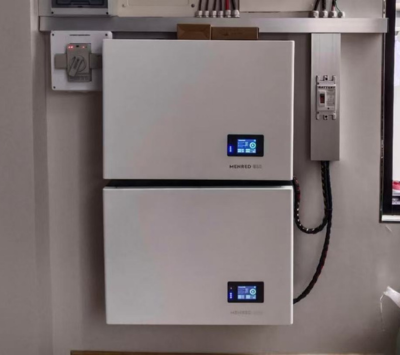Introduction
Lithium-ion batteries have become the backbone of modern energy storage systems (ESS). From small-scale residential setups to industrial-grade solutions, these batteries power homes, businesses, and even entire grids. Understanding the number of cells in a lithium-ion battery is essential for anyone working in the energy storage field. The cell count directly impacts the battery’s performance, capacity, and scalability. This article provides a detailed guide to understanding lithium-ion battery cells, their configurations, and how they are applied in energy storage systems.
What Are Lithium-Ion Battery Cells?
Battery cells are the basic building blocks of a lithium-ion battery. Each cell consists of three main components: the anode, cathode, and electrolyte. These components work together to store and release electrical energy.
In energy storage applications, lithium-ion cells are often assembled into modules and packs to achieve the desired voltage and capacity. The type, size, and configuration of the cells determine the battery’s overall performance characteristics.
Common Types of Lithium-Ion Cells
Cylindrical Cells
Shape: Small, cylindrical canisters (e.g., 18650 or 21700).
Applications: Commonly used in consumer electronics and some ESS applications.
Advantages: High durability, efficient heat dissipation.
Prismatic Cells
Shape: Rectangular blocks.
Applications: Widely used in larger energy storage systems.
Advantages: Space-efficient, customizable sizes.
Pouch Cells
Shape: Flat and flexible.
Applications: Used in compact and lightweight energy storage solutions.
Advantages: Lightweight and high energy density.
Why Cell Count Matters in Energy Storage Systems
The number of cells in a lithium-ion battery pack directly influences its functionality. Here are some key reasons why cell count is important:
Voltage Configuration
Batteries achieve higher voltage by connecting cells in series. For example, a 51.2V battery pack typically consists of 16 cells connected in series.
Capacity and Scalability
Adding cells in parallel increases the battery’s capacity. A configuration with additional parallel connections can enhance energy storage capacity.
Performance and Efficiency
Proper cell configurations ensure optimal performance and minimal energy loss.
Safety and Reliability
Using the right number of cells reduces the risk of overheating and ensures stable operation.
How to Calculate Cell Count in Lithium-Ion Energy Storage Batteries
To determine the number of cells in a battery, you need to understand the following parameters:
Voltage Requirement
Lithium-ion cells typically have a nominal voltage of 3.2V to 3.7V per cell.
Divide the desired battery voltage by the nominal voltage of a single cell.
Example: For a 51.2V battery, use 51.2V / 3.2V = 16 cells in series.
Capacity Requirement
Determine the required capacity in ampere-hours (Ah).
Multiply the number of parallel connections by the capacity of each cell.
Configuration Type (Series vs. Parallel)
Series (S): Increases voltage.
Parallel (P): Increases capacity.
Typical Configurations in Energy Storage Systems
Small-Scale Residential ESS
Example: A 6kWh battery with a 51.2V configuration.
Cell Count: Approximately 16 cells.
Commercial and Industrial ESS
Example: Modular systems for larger energy demands.
Cell Count: Thousands of cells organized into multiple modules and packs.
Portable Energy Storage Solutions
Example: Power banks or portable solar generators.
Cell Count: Varies significantly depending on capacity.
 Case Studies: Real-World Applications
Case Studies: Real-World Applications
Home Energy Storage (Menred ESS LFP.6144.W)
Capacity: 6.144kWh.
Configuration: Designed for a nominal voltage of 51.2V.
Features: Wall-mounted design, supports parallel connection of up to 16 units.
Frequently Asked Questions
How does cell count affect battery lifespan?
The lifespan depends on the cell quality and configuration. A well-designed pack ensures balanced load distribution, which extends battery life.
Can I customize the cell count for my application?
Yes, manufacturers can adjust the number of cells to meet specific voltage and capacity requirements.
Why is 51.2V a common voltage for ESS?
This voltage aligns with the nominal voltage of lithium iron phosphate (LiFePO4) cells, offering an optimal balance of performance and safety.
The Role of Safety in Cell Configuration
Energy storage systems must prioritize safety to avoid issues such as thermal runaway or short circuits. Proper cell balancing and robust battery management systems (BMS) are essential. Modern lithium-ion batteries often include:
AI algorithms for fault detection.
Temperature monitoring for thermal management.
Circuit breakers for overcurrent protection.
Future Trends in Lithium-Ion Energy Storage Batteries
High-Density Cells
Advances in cell chemistry are increasing energy density, reducing the number of cells required.
Modular Designs
Stackable battery modules allow easier customization and scalability.
Improved Safety Features
Innovations like solid-state electrolytes are reducing safety risks.
Sustainability
Efforts to recycle lithium-ion cells are becoming a priority in the industry.
Conclusion
The number of cells in a lithium-ion energy storage battery depends on the system’s voltage, capacity, and application. Understanding cell configurations—such as series and parallel connections—is crucial for optimizing battery performance and reliability. As the demand for energy storage grows, advancements in battery technology will continue to redefine the role of lithium-ion cells in powering the future. Whether you’re designing a small-scale home storage system or an industrial-grade solution, knowing how to calculate and configure cell counts will give you a competitive edge in the evolving energy landscape.






